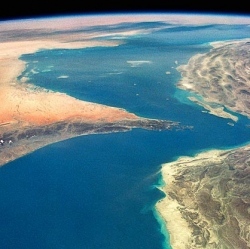
Facebook wants to be as cool as Google. Google wants to be the most innovative tech firm in history. Both are aiming to deliver internet access to the world’s offline billions, one with balloons, the other with drones. What about dirigibles? Dirigibles (or airships) figure prominently in early 20th century propaganda.
But excepting eye-in-the-sky ads at sporting events, the dirigible is largely out of fashion.
Space firm, Thales, thinks that needs to change. The maker of commercial satellites knows well the cost of putting hardware into orbit. So what about something a little lower and cheaper? Enter StratoBus, an autonomous dirigible designed to lug 200 kilogram payloads into the stratosphere.
At 20 kilometers, StratoBus would operate above commercial airliners and below space divers (see Felix Baumgartner). Sunlight would bathe the 70- to 100-meter dirigible’s solar panels all day, while its energy storage system would get it through the night, powering its instruments and twin propellers.
Unlike Google Loon, StratoBus would be a stationary system. Its carbon fiber shell would be designed to minimize wind resistance, while its props dynamically counteract winds reaching up to 90 kilometers an hour.
The 200 kilogram payload (equivalent to a small satellite) could be used for Earth observation missions including border surveillance, oil spill detection, coastal erosion studies, even, Thales suggests, monitoring pirate ships.
